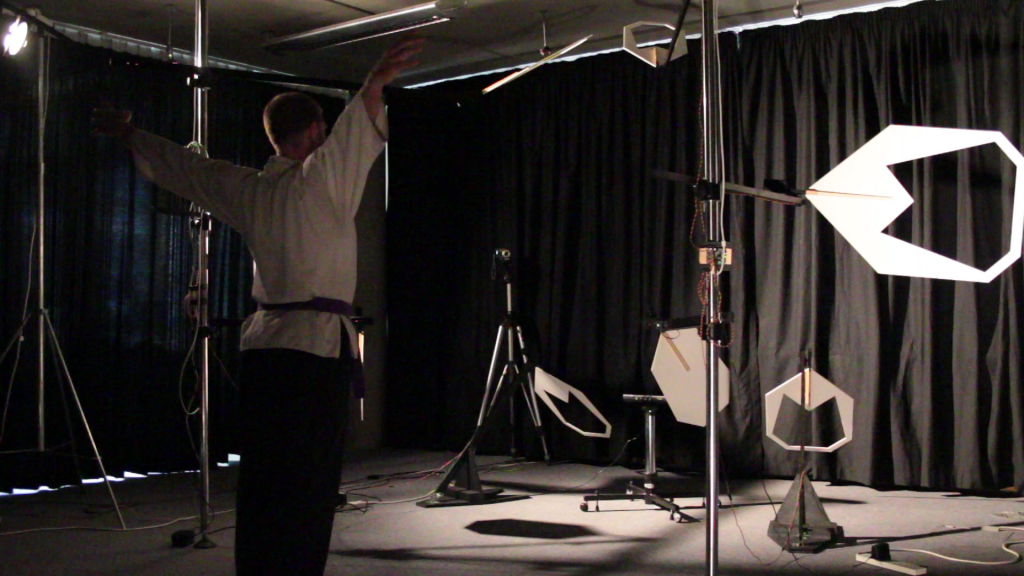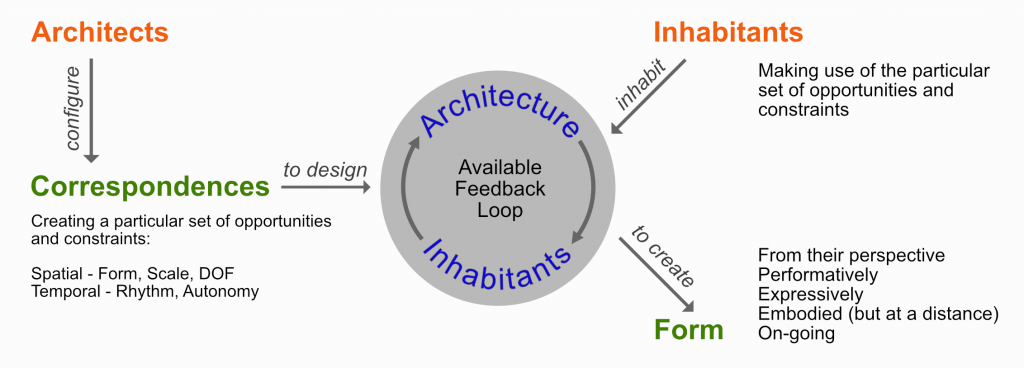Despite movement capture technologies becoming commonplace, the design and the consequences for architecture of movement-based interactions require further research. We combined previous research in this space with the development and evaluation of the MOVE research platform that allows the investigation of movement-based interactions in Adaptive Architecture. Using a Kinect motion sensor, MOVE tracks selected body movements of a person and allows the flexible mapping of those movements to the movement of prototype components. In this way, a person inside MOVE can immediately explore the creation of architectural form around them as they are created through the body. A sensitizing study with martial arts practitioners highlighted the potential use of MOVE as a training device, and it provided further insights into the approach and the specific implementation of the prototype.

We draw on previous work to describe movement-based, architectural co-creation enabled by MOVE: (1) Designers of movement-based interaction embedded in Adaptive Architecture need to draw on and design around the correspondences between person and environment. (2) Inhabiting the created feedback loops results in an on-going form creation process that is egocentric as well as performative and embodied as well as without contact.

Associated Publication: Schnädelbach H., Arieyanto H. (2018) Movement-Based Co-creation of Adaptive Architecture. In: Bier H. (ed.) Robotic Building. Springer Series in Adaptive Environments. Springer